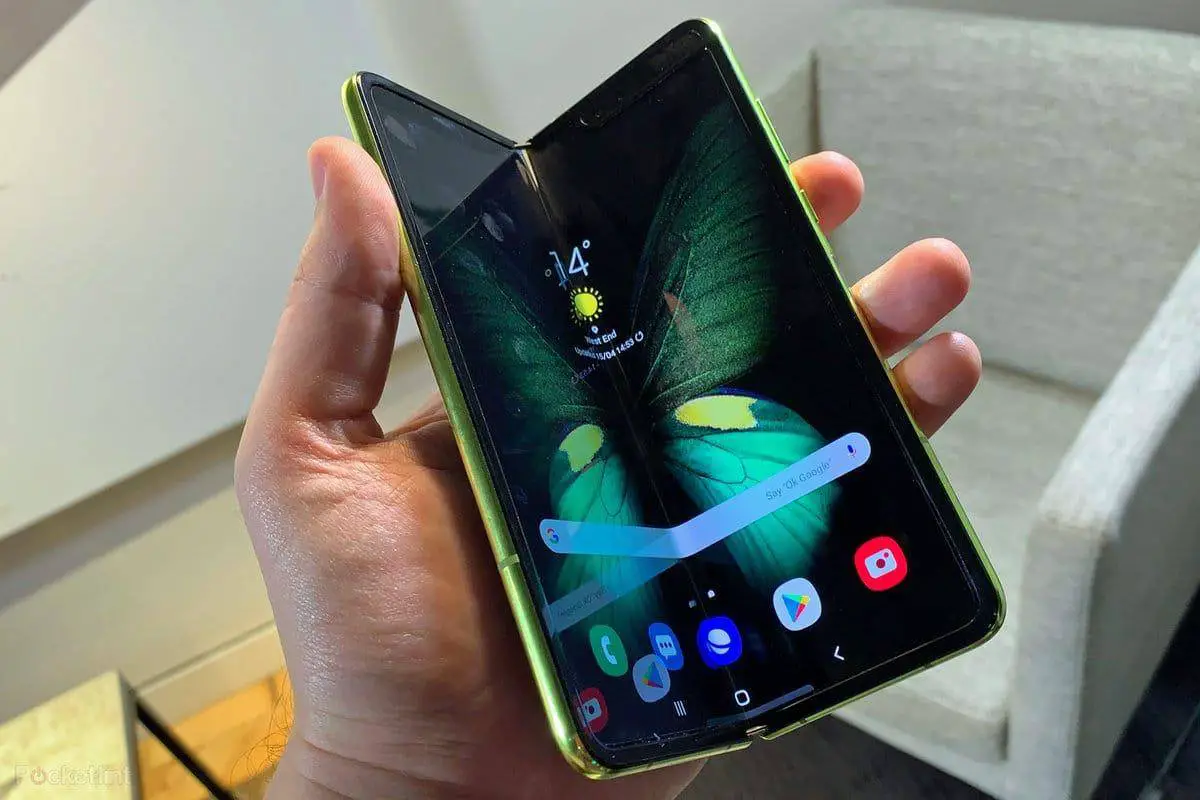Table of Contents
The first and foremost question that arises while talking about foldable screens is- Do the consumers want this anymore? Tech giants like Motorola, Samsung, Huawei surely think so, that foldable phones are the future. Over time, flexible screens of different smartphones have seen significant development. Initially, phones with such flexible screens had nothing remarkable to offer thus they couldn’t grab the due attention.
What Makes the Phones Foldable?
In the present era, folding your smartphones will just result in them breaking into two. However, if your smartphone has a polymer screen or an OLED display, this problem wouldn’t seem to arise. The foldable phones have been filled with somewhat groundbreaking revolutionary tech but the most important and noticeable component is the flexible OLED display.
[media-credit name=”Pocket-lint” link=”https://www.pocket-lint.com/phones/news/huawei/148375-folding-phones-not-ready-samsung-galaxy-fold-huawei-mate-x-fail” align=”aligncenter” width=”1200″] [/media-credit]
[/media-credit]
How does OLED Work Exactly?
OLED displays or Organic Light Emitting Diode Displays have a trellis of organic compounds. These are vivid, too thin, and flexible. Also, they have no requirement for a backlight as they are capable of producing colors bolder than thick LED displays.
What Kind of Possibilities do these Foldable Phones have to Offer?
The tech world has seen a lot over the decades and it might be difficult to answer what exactly the tech giants want the consumers to do and expect from these foldable phones. Devices like Samsung Galaxy F or the Royole FlexPai are capable of expanding themselves to tablet-sized smartphones. Phones with the capability of doubling as a tablet can consume media differently and can also make work easier if on the go. Other devices like the Motorola RAZR 4 offer a lot more when it comes to being a “foldable” technology.
The RAZR 4 folds like a flip phone and makes the bulky cell phone into a compact device. Often, tech demos have shown the consumers the possibilities of wrapping your phone around the wrist. Few of the unveiled foldable phones have presented the consumers with major problems that cannot be ignored or overshadowed. Tech reviewers found that Samsung’s first Galaxy Fold broke easily within a few days of usage. On the other hand, Motorola RAZR comes with a fussy hinge and an underwhelming battery life too.
What are the Current Foldable Phones Available in the Market?
So, now the question is- Are foldable phones here to stay or will they take a dip? Folding screens do sound fascinating and look so too. Devices like Huawei’s Mate X and Galaxy Fold come with two screens. On unfolding them, you get a really roomy screen. On shutting it, you are exposed to an outer screen where you can type away. Lenovo’s Motorola RAZR and Samsung’s Z Flip open to a touch screen of a fairly standard size.
When you fold the phone, you get a miniature screen where you can view app previews and all the notifications. Lenovo is set to launch a larger device that is also bendable, the Lenovo ThinkPad XI Fold. The bigger screen will function as a tablet computer which can also be folded like a book. This device has been made to measure 13.3 inches when unfolded.
[media-credit name=”T3″ link=”https://www.t3.com/news/best-folding-phones” align=”aligncenter” width=”1200″] [/media-credit]
[/media-credit]
The Royole FlexPai was the one and only foldable phone in 2019 that one could buy at the moment and it is priced at $1,318. Other tech companies have started pushing flexible phones to compete in the market. With all these options made available, you might find yourself fidgeting with a clamshell phone soon enough just like the old times. Samsung’s Galaxy Z Flip has been priced at $1,380 and Lenovo’s Motorola RAZR at $1,500.
Pros and Certain Downsides of Foldables
The only advantage that can be chalked out is that you can carry a big screen with you but it will also fit in your pocket easily. Foldable phones offer better performance modules due to their thickness.
Moving on, we mostly have cons for these phones. Relying on flexible OLED, foldable phones cannot be protected much as to be bendable, the screen quality has to be compromised to a certain extent. Also, the visible crease on the screen will tire your eyes out, unlike our general tablets and smartphones. With extended usage, foldable phones have a high tendency of ending up with a broken hinge.
Final Takeaway
Tech companies have experimented with better cameras, longer battery life, and bigger screens, things that the consumers have actually asked for. But the same cannot be said about foldable phones. At the moment, the designs might not appeal a lot to the consumers. The consumer can expect a significant improvement in designs and a fall in the prices as more and more tech giants introduce their new devices.


